Protection
Reed Sensor Contact Protection Circuits
When a reed switch is to be connected to an inductive load or a load where surge current or in-rush current flows
(such as a capacitive load or a lamp load), the following contact protection circuits are required for the reed switch.
Inductive Load
When a reed switch is used with an electromagnetic relay or solenoid, the energy stored will cause an inverse voltage
when the reed contacts break. The voltage, although dependent on the inductance value, sometimes reaches as high as several
hundred volts and becomes a major factor to deteriorate the contacts. The following circuits provide inductive load protection for the reed switch.
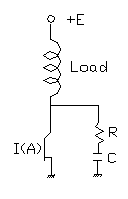 |
Contact protection with RC (connection to load terminal also allowed)
C = I2 / 10
R = E / (10◦I◦(1+50 / E ))
|
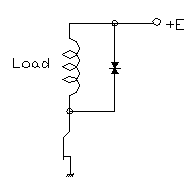 |
Contact protection circuit with varistor
(connection to contact lead also allowed).
If the open state of the contact continues for a relatively long time, the protection circuit should be connected to the same terminal
|
Lamp Load
Specially plated reed switches are available for switching lamp loads. If in case a standard reed switch is to be used to switch a tungsten filament lamp,
the resistance of the cold filament is very small before it is switched on and increases after switching on, followed by lighting with a steady-state current.
The in-rush current (5 to 10 times the steady state current) will flow in the contacts immediately after the lamp is turned on, causing melting or sticking of the contacts.
The following protection circuits are recommended.
 |
R should be decided so that Is < 0.5A can be obtained
R = current limiting resistor
|
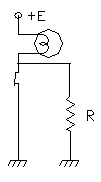 |
R = Parallel Resistance
By connecting R, the filament is heated and its resistance made higher
R < Filament resistance / 3
|
Capacitive Load
In case a capacitor is connected in series or in parallel with a reed switch in a closed circuit,
the in-rush current which flows during charge and discharge of the capacitor, will cause deterioration of the reed contacts.
Shown below are typical examples of protection circuits to prevent the rush current
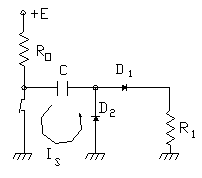 |
Differential circuit without contact protection.
The energy stored in capacitor ‘C’ will cause the rush current (Is) when the contact closes.
|
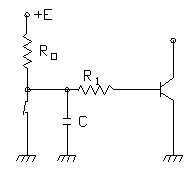 |
Circuit with capacitor ‘C’ for chattering protection.
The rush current will also be caused as in circuit A.
|
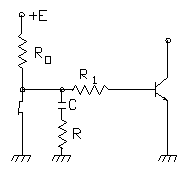 |
Circuit with resistor ‘R’ for contact protection, R=50-500 ohms
|
Wiring Capacitance
In case a reed switch is connected to a load by cable, over a long distance, static capacitance caused by the cable will affect
the contact characteristic of the reed switch. Although it depends on the type of cable used, it is recommended that if the cable
length exceeds 50 meters, protection as per the circuit below is required for longer operating life of the reed switch.
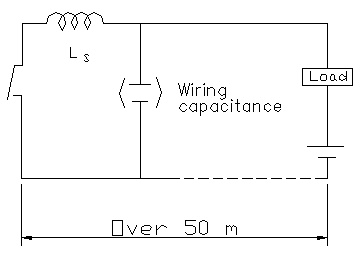
The surge suppressor (Ls) inserted near the reed switch contacts makes the rush current flowing to the contacts to be delayed.
The value of Ls can be replaced by a very small resistance (current-limiting resistor) of 10 to 500 ohms.








